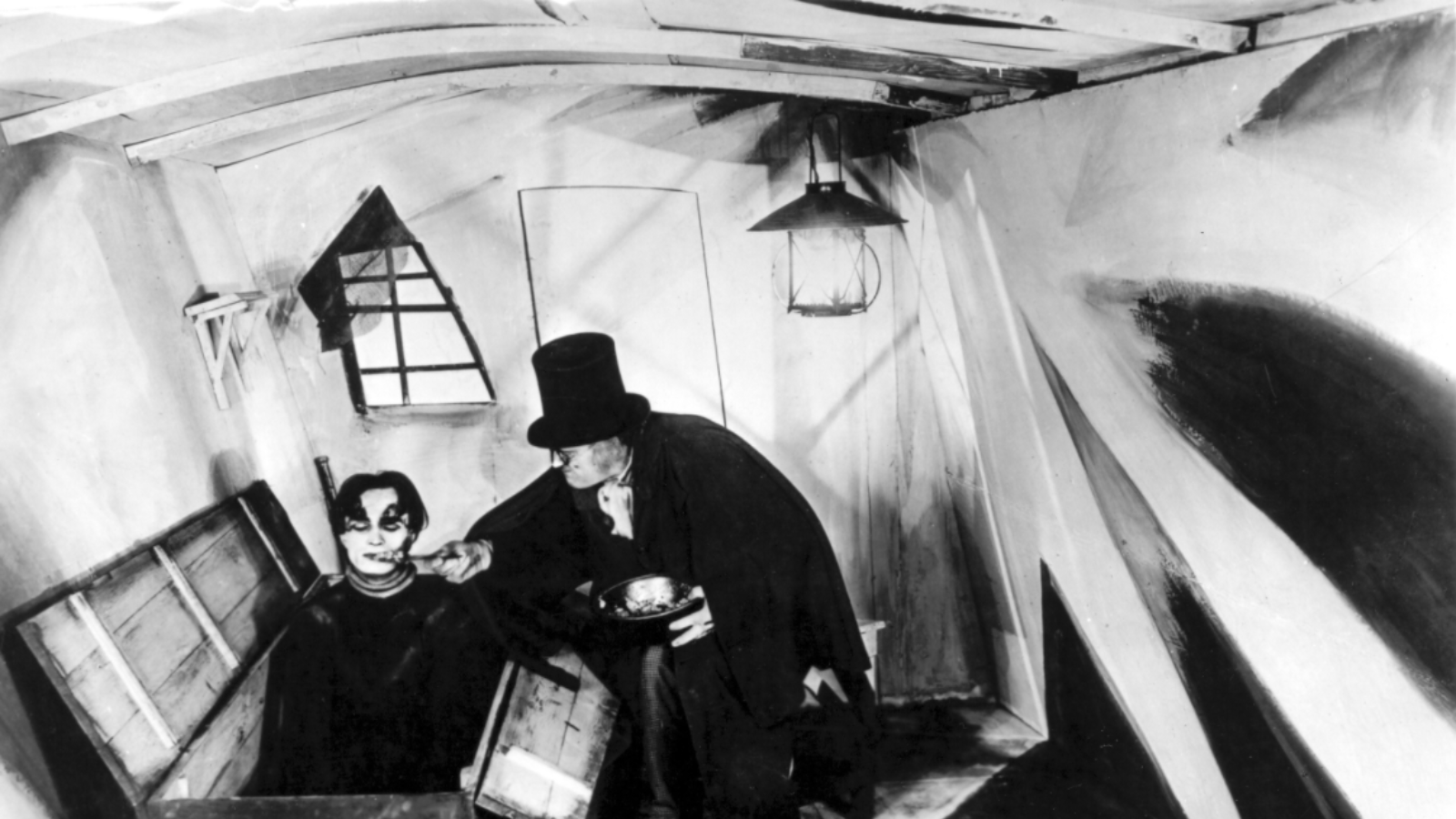
Feb 26 2020 marks the 100th birthday of The Cabinet of Dr. Caligari. The film is widely considered the first true horror movie and made use of German expressionism in its design. Because the movie was a silent film, the visuals were key to show us the idea of a fantasy world. This is noteworthy again, because The Cabinet of Dr. Caligari marked a break from the then young tradition of film making. Up until that point, directors mostly set films in reality, either as historical films, or just set in the then modern world. The Cabinet of Dr. Caligari changed that by showing a monstrous world that is distorted and makes the people within it feel less like people and more like the extentions of a broken world.
The film also pioneered framing devices used in movies, as well as plot twists. Many of these ideas would be continually used in almost every film made after. The monster Cesare, played by Conrad Veidt, became the prototypical monster that later directors would take as their inspiration. The Cabinet of Dr. Caligari also pioneered the ideas of a horrific circus, the monster sneaking into areas, the ways shadows are depicted and slanted floors and walls. The villagers chasing a monster also originated here, as did the Monster carrying off the girl only for it to be his downfall. The mad doctor trope in movies originated here, but it is the idea of the twist ending and th big reveal that would be one of the most lasting impacts of the film.
The Cabinet of Dr. Caligari was a very unique movie, made at an important time in German history, when the political situation in the country was unstable and in a situation that would eventually lead to tragedy. In a way, the movie is both a time capsule for the artistic thoughts of the time, and the foundation of modern cinema. Directors like Tim Burton and M. Night Shyamalan were heavily influenced by the film and the work of director Robert Wiene. Despite having now turned a century old, the movie is still a masterpiece that should be appreciated by all.

